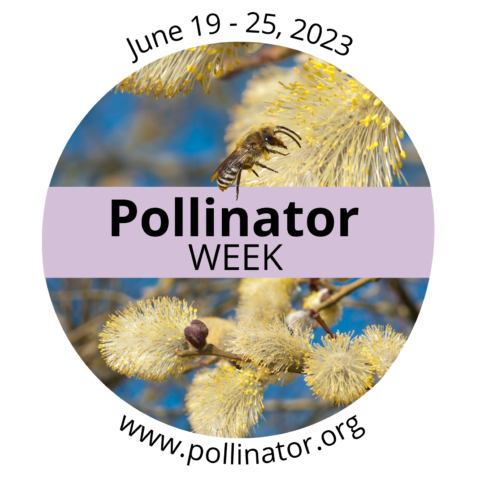 Next week is National Pollinator Week, and June is National Pollinator Month. Both are annual celebrations of pollinator health. It is a time to raise awareness for pollinators and spread the word about what we can do to protect them.
Next week is National Pollinator Week, and June is National Pollinator Month. Both are annual celebrations of pollinator health. It is a time to raise awareness for pollinators and spread the word about what we can do to protect them.
You can help pollinators in your own garden. Like all creatures, pollinators need food, water and shelter.
It’s well worth celebrating these little critters that have tremendous impacts on food crops, flowering plants and ecosystems.
Bees are the most important pollinator. But pollinators also include animals such as birds, bats and small mammals. Most pollinators (more than 200,000 species) are beneficial insects such as flies, beetles, wasps, ants, butterflies, moths and bees.
Help pollinators: Provide food
Choose plants that provide pollen and nectar throughout the growing season. Native plants are especially important to help pollinators.
Here are lists of plants for our region that attract pollinators.
- Xerces Society: Pollinator Plants for the Maritime Northwest
- Pollinator Partnership: Pacific Lowland Regional Guide
- Oregon Metro: Native Plants for Pacific Northwest Gardens
- Proven Winners: Shrubs for Pollinators
- Great Plant Picks: Plants for Bees
- Great Plant Picks: Plants for Birds
- Great Plant Picks: Plants for Butterflies
- Great Plant Picks: Plants for Hummingbirds
- OSU Extension: 12 plants to entice pollinators to your garden
Help pollinators: Provide water
According to UC Davis Bee Haven, “the pollen and nectar that constitute a bee’s diet don’t contain much moisture, so bees must have a water source.” Once bees find a water supply, they will return regularly and direct other bees there.
Proven Winners suggests providing water with a shallow bird bath. Be sure to include landing places like rocks. Or you could create a watering station with just a small, shallow dish filled with rocks. Add fresh, clean water to your watering station regularly. UC Davis Bee Haven has more details on providing water sources for bees.
Help pollinators: Provide shelter
Pollinators need good habitat to survive and thrive. Seventy percent of bees nest in tunnels in bare earth, according to the Xerces Society. Thirty percent lay their eggs in cavities, such as holes in dead wood or hollow stems. Only honey bees have hives.
You can add pollinator habitat through several methods.
- Rethink your mulch and leave some bare ground.
- Grow plants with hollow stems, such as raspberries, elderberry, hydrangea and others. Native bunch grasses also provide habitat.
- Leave a dead tree, stump, log or branches. Dead woody material provides habitat for all sorts of wildlife.
- Leave a brush pile instead of having all your clippings and pruned branches hauled away.
- Add bee houses such as bundles of bamboo, reeds or other hollow or pithy stems that are closed at one end.
For more details, read our blog post about adding bee nesting habitat or the Xerces Society post, “5 Ways To Increase Nesting Habitat For Native Bees.”
Our services can help too
Contact In Harmony for help in creating a landscape that is pollinator-friendly. We can design and install a landscape that attracts birds, bees and butterflies. Our natural lawn, tree and shrub care services help your plants thrive and reduce or eliminate the need for pesticide use.
